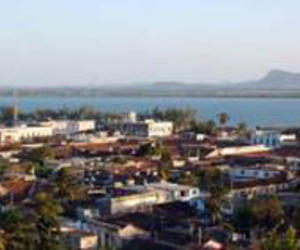Gibara Port: a Not Very Well-known Story
- Submitted by: manso
- Travel and Tourism
- 06 / 01 / 2011

By Jose Abreu Cardet / radioangulo.icrt.cu / Tuesday, 31 May 2011 10:39. Today's Gibara is not an important port but in the past it was Holguin city's the only way out by sea. When visiting the beautiful town of Gibara, it all seems that time has stopped, we are overwhelmed by the strange feeling that that view of the tile roofed houses that go climbing the hills never changed a bit. However, the opening of its port is tinged by an exciting but forgotten story.
By 1783 inhabitants had already asked for the opening of the port, but it 1805 the application was abandoned. Again in 1813 the town council insisted in the necessity of authorizing the construction of a port in this bay where merchant ships had even docked long before such event.
An ecclesiastical officer made the valuations by 1806 who said:
“...it is very convenient to open a port because in 1710 Holguin had a parish church, and for the last 30 years, with no other trade than the local one and with no other favors or aids than its climate, the population has grown by more than 16 000 souls, it is believed that by linking it with the foreign trade as it is aspired the population will grow...”
Unfortunately, it was not until the third decade of the XIX century that the idea came to be true. The governor of Holguin, Francisco de Zayas y Armijo, once in office in 1816 realized on the unfavourable situation of the jurisdiction he was running, mostly because the head town was an inland city. Although smuggling had developed it no longer met the development of the local economy.
For that reason, he undertook the construction of a port at the bay of Gibara, the nearest one to the head town of the jurisdiction (about thirty two kilometers away from the city of Holguin). Then, having the threat by corsairs as a pretext, a small fortress called “Fernando VII” was built in Gibara, initiated in January 16, 1817 and finished in June 2nd, 1818.
The fitting out of the Gibara port was slow indeed. Finally, in December 23, 1821 the Spanish Courts passed that so long waited legalization. In December 31 the King signed the document that arrived in Holguin in July 7, 1822 after a long journey.
Then in July 11 that same year, with bells tolling and drum redoubling in the city of Holguin, the opening of the port of Gibara finally came to be true with ships from different nations and flags.
Comments